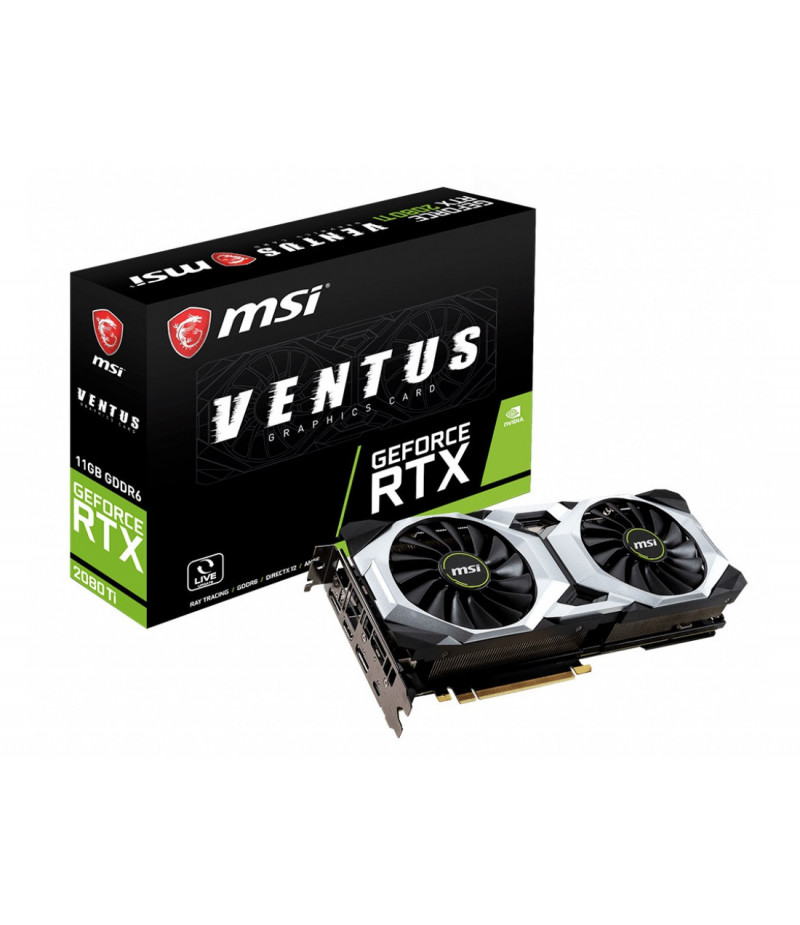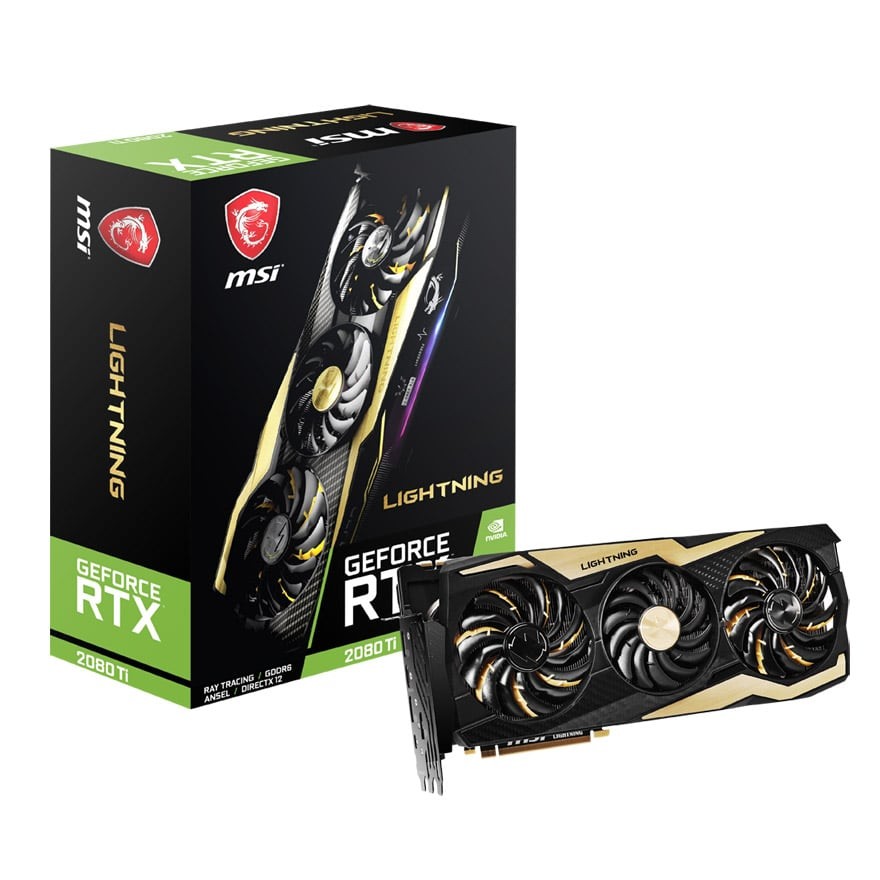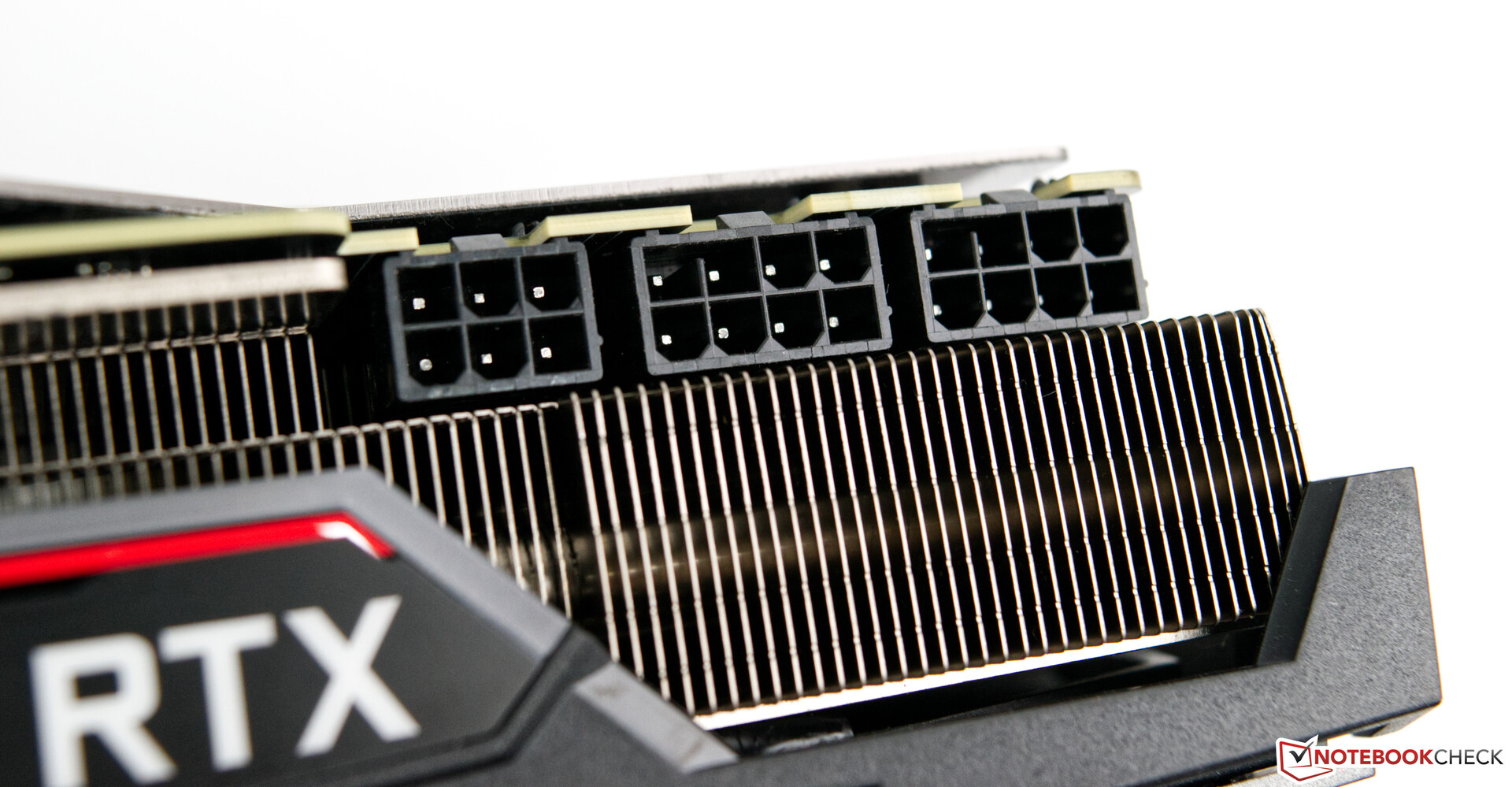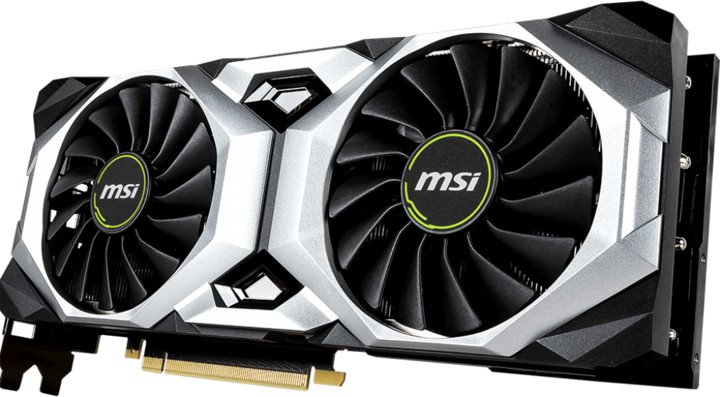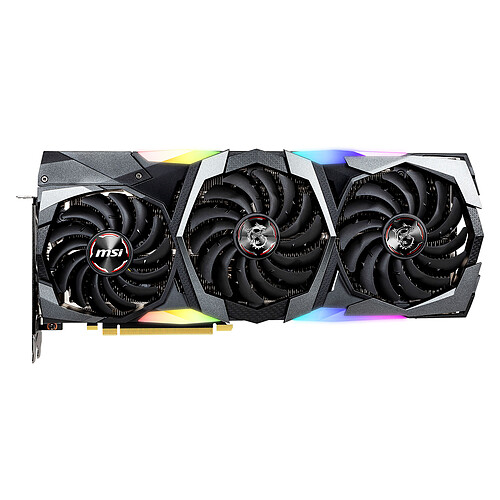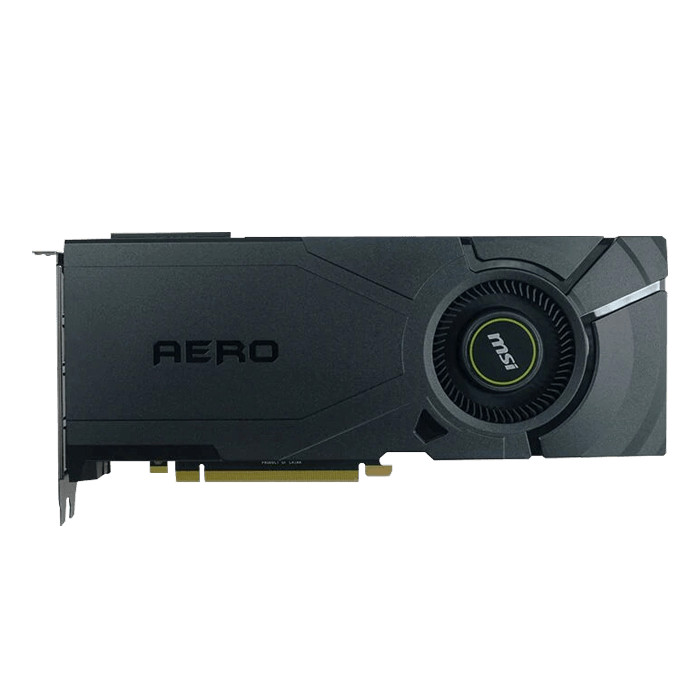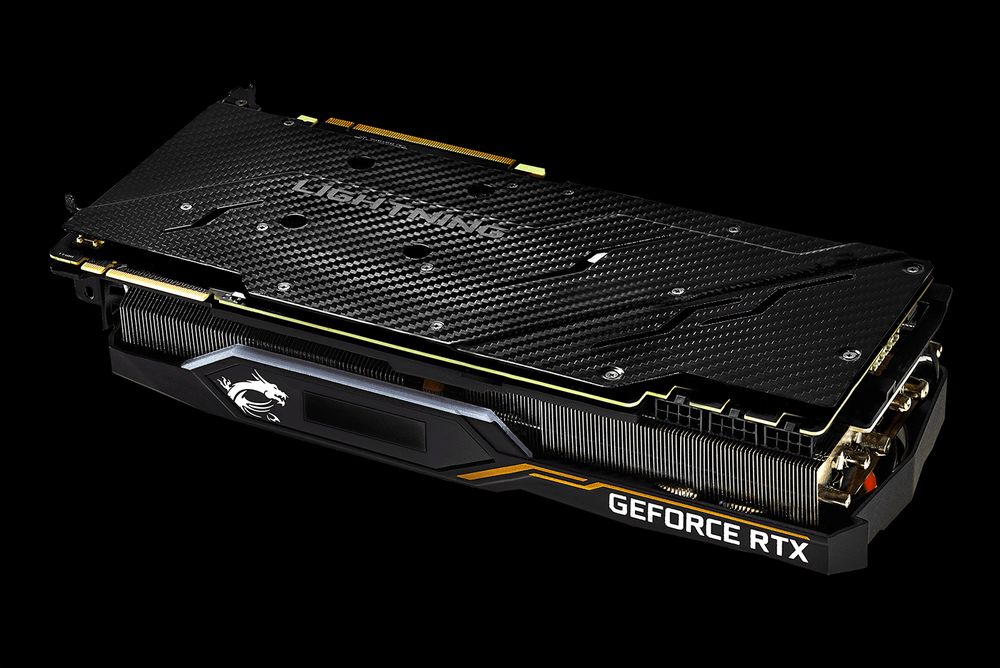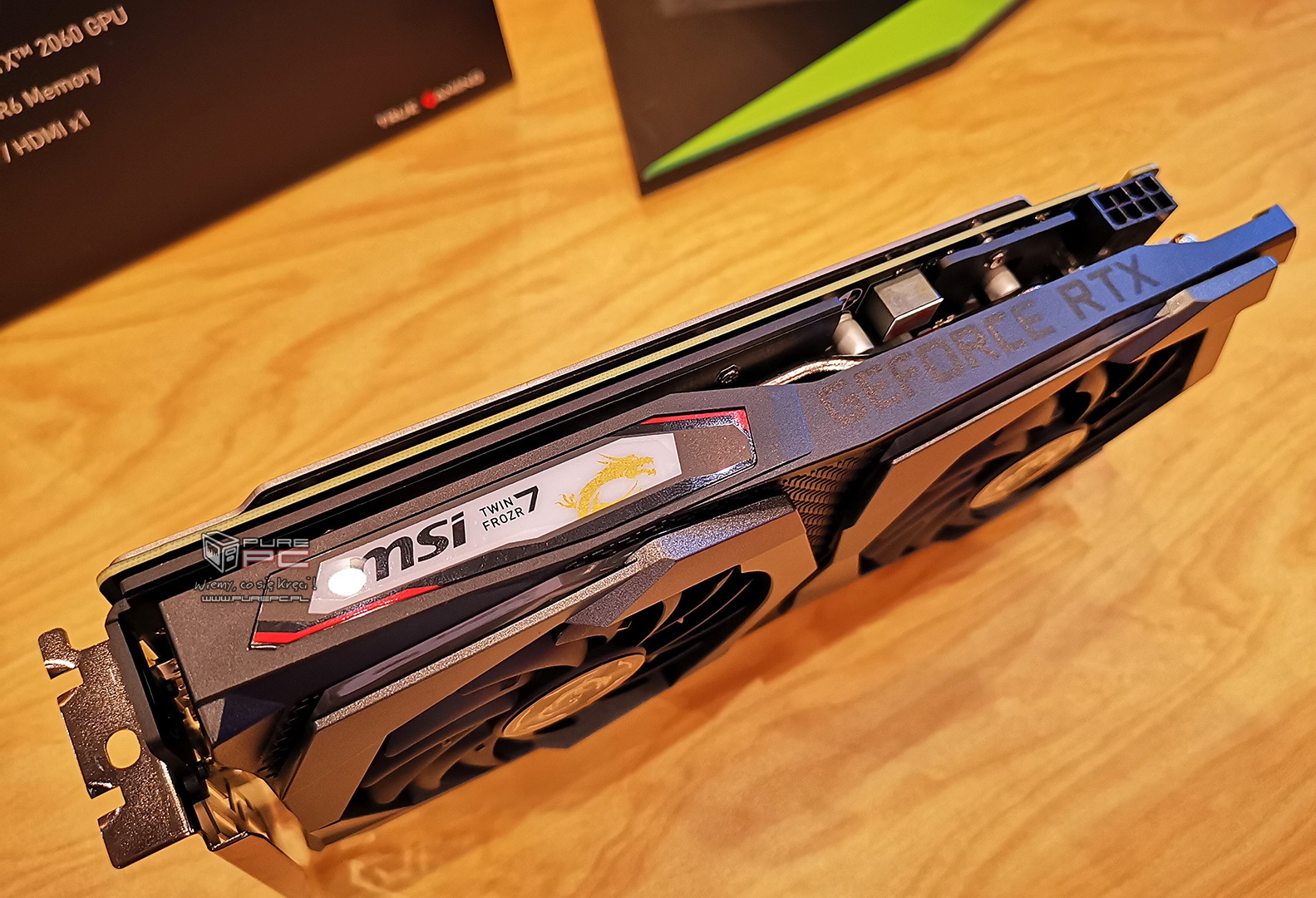This review will focus on the flagship 3080 Ti from MSI, the SUPRIM X series. The MSI RTX 3080 TI SUPRIM X boasts an 1845 MHz boost clock and 1830 MHz out of the box. The SUPRIM X model also features a TDP of 400W, which is 50W over reference specs. In return, you'll gain more performance, bringing the series even closer and sometimes passing 3090 performance.
MSI equipped the card with a semi-passive design; the three fans start to spin and cool once the GPU warms up. Make no mistake; both modes offer the same performance; just a marginal difference in temperatures and acoustics can be perceived. SUPRIM X has been fitted with a new TRI FROZR cooling solution with three TORX 4.0 fans. New in the design is that it has close quarters heat pipes around the VRM and a backplate .
Developers can now add even more amazing graphics effects to Microsoft Windows-based PC games. GeForce RTX graphics cards deliver advanced DX12 features like ray tracing and variable rate shading, bringing games to life with ultra-realistic visual effects and faster frame rates. The GeForce RTX™ 3080 Ti and RTX 3080 graphics cards deliver the ultra performance that gamers crave, powered by Ampere—NVIDIA's 2nd gen RTX architecture. They are built with enhanced RT Cores and Tensor Cores, new streaming multiprocessors, and superfast G6X memory for an amazing gaming experience. NVIDIA designed the GeForce RTX 3080 Ti, not just for any gamer but all gamers who want to have the best 4K graphics performance at hand to power the next-generation of AAA gaming titles with superb visuals and insane fluidity.
It's not just the FPS that matters these days, it's visuals, and a smoother frame rate too and this is exactly what the GeForce RTX 30 series is made to excel at. There's a lot to talk about regarding NVIDIA's flagship Ampere gaming graphics cards so let's start off with the specifications. We test a variety of games spanning various engines, genres, vendor sponsorships , and graphics APIs . We've also enabled temporal anti-aliasing to push these cards to their limits.
We run each benchmark at least three times and list the average result for each test. This increased power saw the peak operating temperature rise by 2C to 77C and the fan speed by 200 RPM to 2100 RPM, so as far as user experience is concerned, they're about the same. Under these conditions the FE model averaged a core clock speed of 1770 MHz, which is well above the advertised GPU boost clock, but that's how Nvidia's GPU boost works. It's an impressive result for a dual-slot graphics card, so bear that in mind as we take a look at the much larger AIB models. Here, the RTX 3080 Ti once again ran the game at more than playable frame rates at every resolution with its graphics settings maxed. The game doesn't have an internal benchmark, so we gauge performance by taking an average frame rate while playing through the open section of the first level.
You can see a very clear hierarchy in the amount of resources devoted to each off-the-shelf product, with everything you see in this list still being produced and still sold… where there is at least inventory. Not much in the history of NVIDIA We saw such a quick launch attachment that included seven video cards from the same series. The interesting thing is that the desire for performance is higher than the desire to produce graphics cards with an extremely low heat envelope. Almost all new graphics cards from NVIDIA Rated 200W or more of heat casing. Although electronic components are still scarce, Nvidia still continued to market new graphics cards this year.
One of the most recent is the GeForce RTX 3080 Ti, a model cut like other GeForces to run video games in 4K and smoothly. It is displayed at 1199 € on the manufacturer's website and is placed just behind the flagship RTX 3090 which is at 1549 €. This is a great alternative to consider if you don't need the ton of extra memory (24 GB vs. "only" 12), the extra computing power for AI, or just don't need the space in your case. It takes the throne of the fastest PC gaming graphics card with nothing coming even close to it. It's surprisingly much faster than the GeForce RTX 2080 Ti which is its Turing based predecessor but just being fast isn't enough for a card of this scale or price.
The GeForce RTX 3080 Ti carries more cores, more memory, higher performance efficiency, and also carries next-generation ray-tracing and tensor cores that make this a truly next-generation graphics card. There isn't generally a big difference between different AIBs of the same card graphics card model. The price gap between 'premium' selections from the more budget offerings, does typically represent a fair value of the card. Rainbow Six Siegestill dominates the Steam charts years after its launch, and Ubisoft supports it with frequent updates and events. The developers have poured a ton of work into the game's AnvilNext engine over the years, eventually rolling out a Vulkan version of the game that we use to test.
By default, the game lowers the render scaling to increase frame rates, but we set it to 100 percent to benchmark native rendering performance on graphics cards. No doubt that the GeForce RTX 3080 Ti is a 4K gaming-capable graphics card. Even with ultra graphics or the highest graphics settings, it was able to drive all game titles above 60fps in 3480×2160 resolution. At 4K resolution, the RTX 3080 Ti offers around 13%, on average, performance increase from the RTX 3080.
The premium construction of the card shows itself in the brushed aluminium shroud, which confers a really solid feel. The TriFrozr 2S cooler keeps things chilly, featuring three Torx 4.0 fans. Each double-ball bearing fan has a unique design, where individual pairs of blades are linked with a ring of sorts. This is supposed to help focus airflow toward the heatsink and increase static pressure. This cooling system itself is identical to what was featured in the earlier RTX 3080 Gaming X Trio, but the new brushed metal shroud is the visual highlight that elevates the graphics card to another level. Near the three-pin power connector, MSI has added a BIOS selector switch that lets you choose between Gaming and Silent modes.
Both have the same clock speed, but Gaming Mode allows the fans to ramp a little higher to keep the card cool. In this mode, the card peaked at 68C after repeat runs of Unigine Heaven and hovered closer to 65C when playing actual games. This was also in a hot 26C office, so I would expect the card to run cooler in an air conditioned setting. In Silent Mode, this ramped to 72C but I honestly didn't find it necessary.
The cooling system is performant enough that it never needed to ramp the fans up obnoxiously high and was on par, if not a bit better, than the RTX 3080 Ti Founders Edition in acoustic performance. So far, we've focused on gaming performance using traditional rasterization graphics. We've also excluded using Nvidia's DLSS technology in order to provide an apples-to-apples comparison. Let's change things up for a moment and look at ray tracing performance, with and without DLSS 2.0, where applicable. We're only showing DLSS results on the 3080 Ti, and we used the Quality mode in the six games where it was supported. AMD's FSR will provide an alternative to DLSS in the coming months, though we don't yet have hands-on experience with it, so we can't comment on the image quality.
We'll also confine testing to 1440p and 1080p here since native 4K with ray tracing tends to push even the fastest GPUs beyond their reasonable limits. This is the same testing we used in our recent AMD vs. Nvidia Ray Tracing Battle. Support for both ray tracing and DLSS is on the way for games such as Doom Eternal, Icarus , and Lego Builder's Journey, whereas Red Dead Redemption 2 and Tom Clancy's Rainbow Six Siege are getting DLSS only. An interesting macro image is that of the capacitor composition behind the graphic core itself.
When the RTX 30 series was launched NVIDIA, There were users who received that their computer system crashes when changing from rest mode to game effort mode. According to many, it was the capacitor composition of the video card and associated with the graphics core itself. It has been said that in some designs there is no good balance between capacitance and response time and current supply. That's a huge difference, but Control hits the RTX cards right where it matters most. So the extra video memory in the 3080 Ti is more adept at rendering a 4K scene with ray tracing and graphics set to maximum with no DLSS.
Of course, the 80 RT cores and 10,240 CUDA cores also make a huge difference. The reality is that Control is now very playable at 4K with max settings for RTX even before you turn on DLSS thanks to the 3080 Ti. As ever, the main difference between the Founder's Edition of the graphics card and the AIBs is the cooling solution. The RTX 3080 Ti uses the same 2-slot design as the RTX 3080, rather than the three-slot design of the RTX 3090 FE.
Sadly the RTX 3080 Ti Founder's Edition has the same drawback, so this is a consideration potential buyers of this card will have to weigh up. The build quality of Gigabyte AIBs is generally of a good standard and this GPU is no exception. This also reduces noise when using the graphics card generally, and it is among the quieter RTX 3080 Tis available. The cooling is of a good standard and brings some piece of mind that the card will last the distance and not lose efficiency over time like the Founder's Edition.
In the following article, we'll be scouring the web to find only the best RTX 3080Ti graphics cards in today's market. Like always, we'll be testing each for performance, cooling, design, and build quality – concluding with a final rundown of the value each brings to the table. Brad Chacos/IDGAMD's rival Radeon RX 6900 XT, on the other hand, packs in more raw capacity—16GB—but of the slower GDDR6 variety across a smaller 256-bit bus, so it only has an effectively memory bandwidth of 512GBps.
That's a bit deceiving though, as AMD's RDNA 2 architecture includes a very high bandwidth "Infinity Cache" right on the GPU die itself that can handle many frame buffer tasks without needing to access the graphics card's memory. Nvidia's cards lack a similar feature and rely on the raw power of GDDR6X over a wider bus. In practice, however, all of these high-end GeForce and Radeon cards deliver plenty of bandwidth and performance for 4K gaming. The most important thing to look at is the CUDA core count, as that's a key indicator of performance for Nvidia's graphics cards. With a whopping 10,240 cores, the GeForce RTX 3080 Ti isn't much of a cut-down GPU—the RTX 3090 has 10,496. Our benchmarks will show it leaving the vanilla 3080 in the dust and landing right next to the 3090 in raw gaming performance.
Out of the box this model peaked at 49C with a fan speed of just 1500 RPM, which allowed for an average clock speed of 1920 MHz, or a 5% increase over the TUF Gaming, while running 15C cooler and quieter. Of course, this premium model will be much more expensive, but that's just par for the course when discussing liquid-cooled graphics cards. The Nvidia RTX 3080 Ti is one of the most powerful graphics cards I've tested in quite some time, offering stellar 4K performance across the board, even with ray tracing graphics settings on. But its price makes it a very expensive luxury, with better value found elsewhere.
Godfall is a large-scale open-world action RPG, full of reflective surfaces and advanced light effects. Unlike Control, it's optimised to run ray tracing on AMD, rather than Nvidia graphics cards, which is the reason it doesn't support DLSS at the moment. Here, the 3080 Ti once again proved capable of running the game at playable frame rates across every resolution. Similarly, the 3080 Ti also tackled Control's demanding ray tracing well. It reached 85 to 90 fps in 1,440p with maxed out graphics and medium ray tracing settings. While impressive, though, that's only 5 to 10fps more than what I saw on the 3080.
Oddly enough, both cards delivered similar performance while playing in 4K with NVIDIA's DLSS technology, which upscaled the rendered graphics from 1,440p. I was able to crank the ray tracing settings up to high and still see a steady 65 to 70fps on the 3080 and the 3080 Ti. It could just be that game isn't fully optimized for NVIDIA's faster hardware yet.
The MSI GeForce RTX 3080 Ti Suprim X is the company's new flagship gaming graphics card and part of NVIDIA's refresh of the RTX 30-series "Ampere" family to bolster its position in the high-end segment. The Suprim X is an MSI exercise at leveling up to the NVIDIA Founders Edition in terms of original design and build quality. The most premium design and materials combine with the company's most advanced graphics-card cooling solution and overclocking-optimized PCB to offer the highest tier of factory overclocks. The ASUS GPU Tweak II utility takes graphics card tuning to the next level. It allows you to tweak critical parameters including GPU core clocks, memory frequency, and voltage settings, with the option to monitor everything in real-time through a customizable on-screen display. Advanced fan control is also included along with many more features to help you get the most out of your graphics card.
Components are selected for TUF Gaming graphics cards based on their durability and performance. In addition to top-shelf chokes and MOSFETs, capacitors that meet military-grade certification make the TUF stand tall amongst the competition. The components are soldered to the PCB using our advanced Auto-Extreme automated manufacturing process. Smooth joints on the rear of the PCB and the elimination of human errors ensure each graphics card meets our rigorous specifications.
Finally, to ensure flawless performance when it counts, the cards are subjected to a grueling 144-hour validation trial. The RTX 3080 Ti will deliver a 50% improvement in performance over the RTX 2080 Ti at 4K resolution, according to Nvidia's benchmarks. The company released a gameplay video of Doom Eternal running at 60 frames per second in 4K resolution on an RTX 3080 Ti; you can watch it on YouTube. The RTX 3080 Ti, which Nvidia described in its announcement as its "new gaming flagship," will be released worldwide on Thursday, June 3, for $1,199. That's the same price as the RTX 2080 Ti, the highest-end GPU in Nvidia's initial line of graphics cards capable of real-time ray tracing, which debuted in September 2018. (The price is what Nvidia will charge for the Founders Edition of its GPU; cards from third parties will start at that level and go up from there.) It's also $300 lower than the cost of the massive RTX 3090.
GDDR6X memory is known inside one that emits a tremendous amount of heat, and its cooling on the back of the card is a recommended thing. This video card uses a respectable aluminum surface and thermal pads to conduct heat from the card. There is a dragon logo associated with the gaming products of MSI And it's on RGB Are controlled. At this point it has been said that as far as the price and availability of the video card is concerned the situation in the market has not changed significantly in the last few months.
There is still a very large demand for products of this type from just about anyone you can think of. The AI world wants such, the gaming world wants such, and of course content creators and graphics people who appreciate the respectable processing power that such a product offers. Demand for the 3080 Ti will likely match that of the 3080 — at least among hardcore gamers. This is a powerful, 4K graphics card with a suite of great features as well as enough speedy GDDR6X memory to demolish productivity tasks and ray tracing workloads. The TGP for the card is set to be slightly higher than the RTX 3080 at 350 Watts.
That's definitely needed to feed the extra cores so NVIDIA might have to optimize the clocks a bit here. In terms of performance, the graphics card is said to be as fast as the RTX 3090 but with half the memory & LHR technology-enabled. As for compute numbers, the RTX 3080 Ti features 34 shader TFLOPs, 67 RT-TFLOPs, & 273 Tensor TFLOPs . TDP, better known as thermal design power, refers to the maximum amount of heat that the GPU's cooler can dissipate when at maximum load.
Each brand determines the TDP based on a unique formula, so cannot be definitively compared, but they will still give you a good indication of the amount of heat your graphics card will generate. Despite the prevalence of the TDP figure in marketing, unlike with CPUs, GPUs come with a pre-installed cooler, so the actual bearing this figure will have on your decision-making process is limited. Although not always the case, often lesser-known brands end up using thermal solutions that lag behind those of premium competitors, leading to an effective cap on the boost clock speed. The biggest variation in different AIBs of the same graphics card tends to come from the clock speed.
Clock speed, or clock rate, is the speed at which your microprocessor operates . For all intents and purposes, this specification lets us know how fast your GPU will perform instructions and render graphics, so is a core consideration in the performance of a card. The 'base clock' (i.e. the theoretic idling speed of the GPU) of the RTX 3080 Ti Founder's Edition is 1365 MHz, with a 'boost clock' of 1665 MHz (i.e. the speed the card will run at under high-stress scenarios). One of the best games of 2019,Metro Exodusremains one of the best-looking games around, too. The latest version of the 4A Engine provides incredibly luscious, ultra-detailed visuals, with one of the most stunning real-time ray tracing implementations released yet. The Extreme graphics preset we benchmark can melt even the most powerful modern hardware, as you'll see below, though the game's Ultra and High presets still look good at much higher frame rates.
During their Computex 2021 keynote, NVIDIA's Jeff Fisher, GeForce Senior Vice President, and Manuvir Das, Head of Enterprise Computing, unveiled a number of new enterprise and consumer products, targeting multiple market segments. For all of the gamers though, it was Jeff Fisher's official unveiling of the oft-rumored GeForce RTX 3080 Ti and RTX 3070 Ti cards that most likely got your juices flowing. But based on my review of the RTX 3080 SUPRIM X, the SUPRIM series typically performs slightly faster compared to other reference-based graphics cards.

